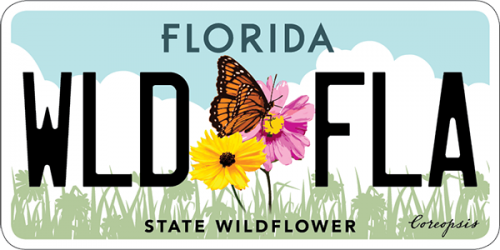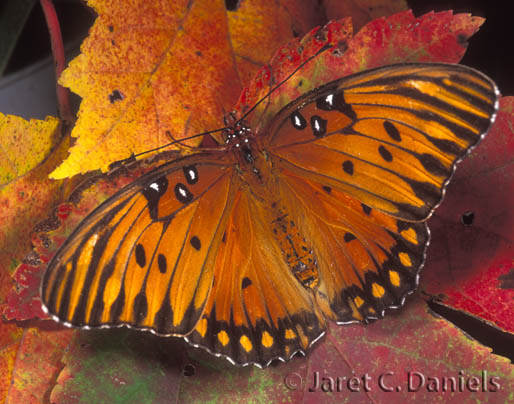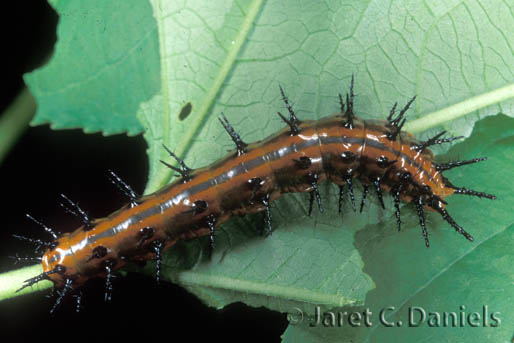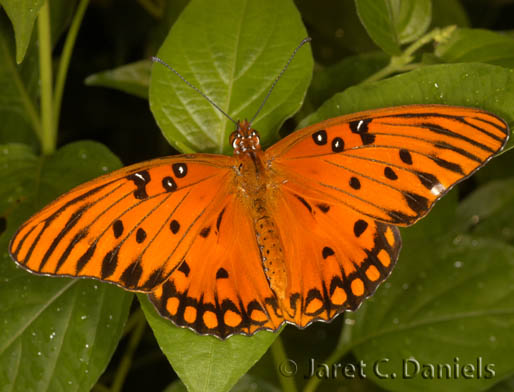- Family name: Nymphalidae/Brush-Footed Butterflies
- General description: orange with black markings (female duller orange); hindwing with black chainlike band along outer margin; forewing elongate with three black-rimmed white spots along leading margin. Ventral hindwing brown with numerous elongate silver spots.
- Field Marks: orange with black markings; forewing elongate with three black-rimmed white spots along leading margin; ventral hindwing with elongate silver spots.
- Sexes: appear similar
- Wingspan: 50-74 mm
- Life Cycle: Egg: yellow, elongate, laid singly on host leaves an tendrils Mature larva: orange with darker stripes and numerous black branched spines Chrysalis: light brown with darker brown blotches
- Number of Generations: multiple
- Flight Season: All
- Abundance: Common
- Habitat: old fields, disturbed sites, roadsides, gardens, parks, pastures
- Larval Host Plants: maypop (Passiflora incarnata), yellow passion flower (Passiflora lutea), corky-stemmed passion flower (Passiflora suberosa)
- Similar Species: Monarch, Julia
- Additional Information: Migratory; very common garden butterfly. Range is limited in Colorado and Nevada.
- Range in Florida
 The Florida Wildflowers & Butterflies projects at the Florida Museum are sponsored in part by the State of Florida and the Florida Wildflower Foundation, Inc.
The Florida Wildflowers & Butterflies projects at the Florida Museum are sponsored in part by the State of Florida and the Florida Wildflower Foundation, Inc.


